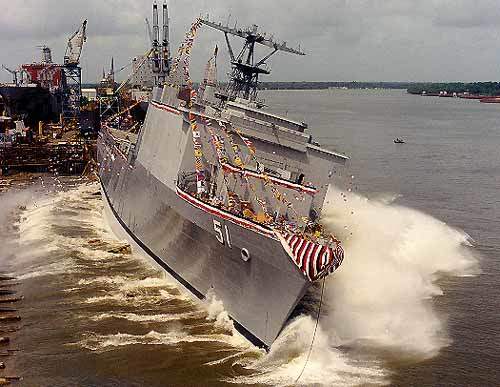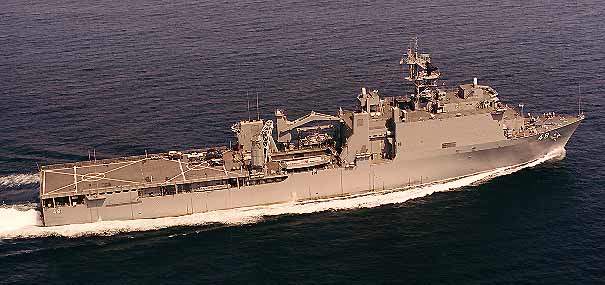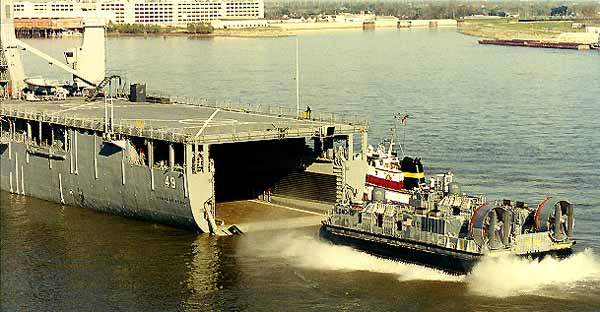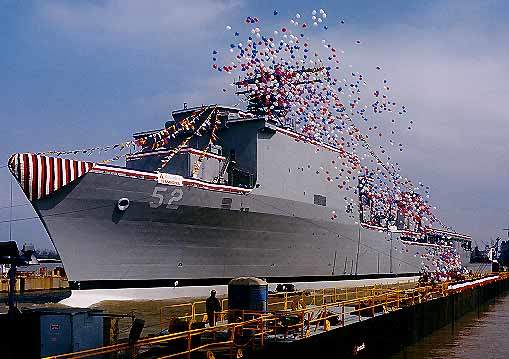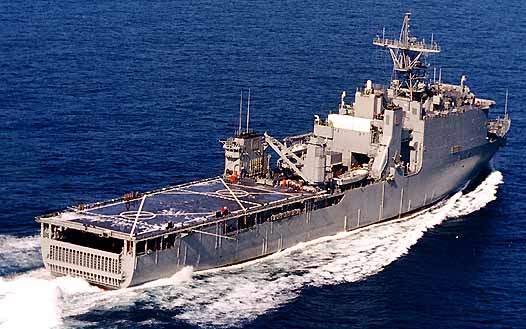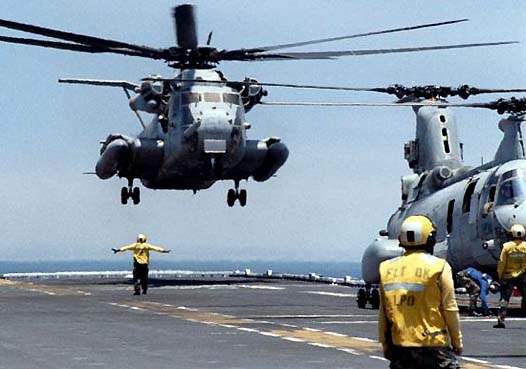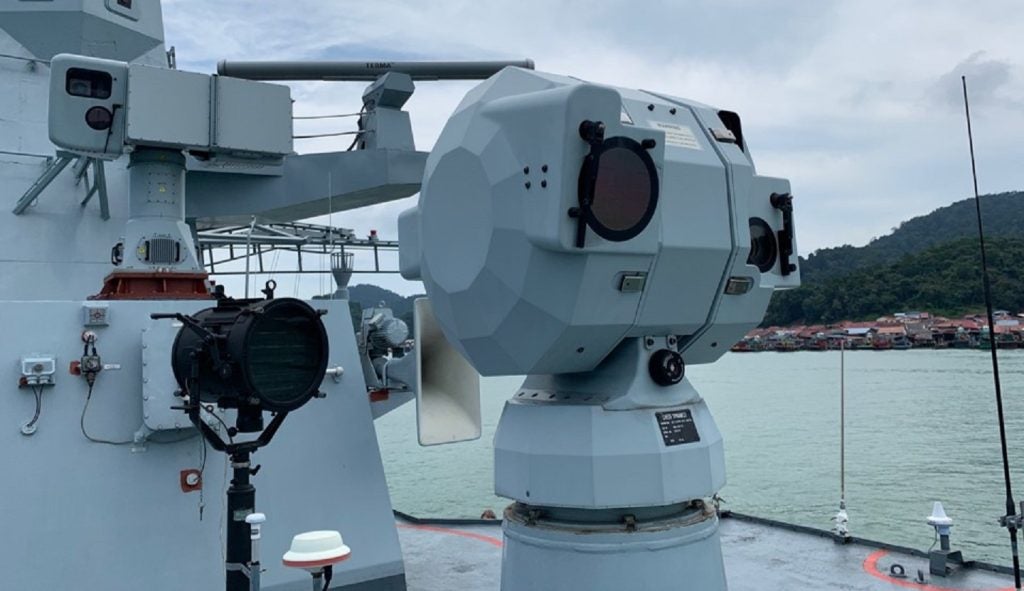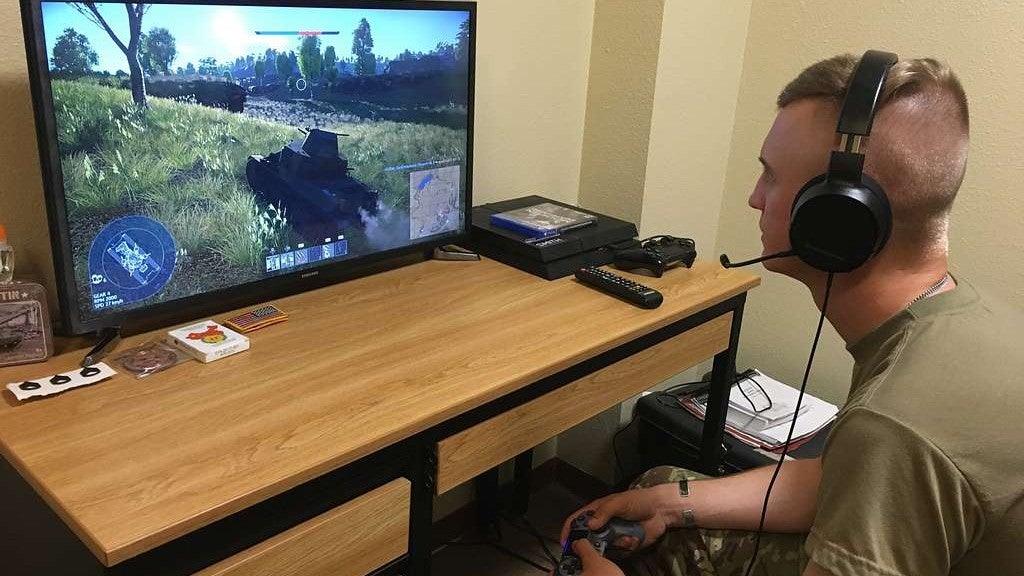The Whidbey Island Class and the Harpers Ferry Class are dock landing ships which support amphibious operations including the landing of forces onto hostile shores.
The Whidbey Island Class ships (USS Whidbey Island LSD 41, USS Germantown LSD 42, USS Fort McHenry LSD 43, USS Gunston Hall LSD 44, USS Comstock LSD 45, USS Tortuga LSD 46, USS Rushmore LSD 47, USS Ashland LSD 48) were built by Avondale Industries of New Orleans, which was also selected to build the cargo version of the ship, the Harpers Ferry Class (USS Harpers Ferry LSD 49, USS Carter Hall LSD 50, USS Oak Hill LSD 51, USS Pearl Harbor LSD 52).
Whidbey Island Class dock landing ships
The Whidbey Island Class ships were built to transport and launch air-cushioned landing craft (LCAC). The ships also provide docking and repair facilities for LCACs and for a range of conventional military, utility and personnel landing craft and also provide landing facilities for helicopters. The Harpers Ferry Class provides an increased cargo capacity and reduces the number of air cushioned landing craft carried from four to two. As well as 340 crew members, the ships have capacity for 500 troops,
The last of class, USS Pearl Harbour (LSD 52), was commissioned in May 1998.
The 12 Whidbey Island Class and Harpers Ferry Class ships are currently undergoing mid-life upgrade works to allow them to remain in service until 2038. The upgrade work began in 1998 and expected to be complete by 2014. Metro Machine Corp is carrying out the modernisation of the ships based on the east coast, while National Steel and Shipbuilding is undertaking the upgrade of ships homeported on the west coast.
The upgrades include diesel engine improvements including upgrade of fuel, maintenance savings systems and engineering control systems, air conditioning / chill water capacity optimisation, and the replacement of air compressors and all-electric steam systems.
USS Gunston Hall (LSD 44) was the first ship to complete the mid-life modernisation. It successfully completed the sea trials in May 2009.
Ship self-defence system (SSDS)
Under a US Navy programme, the Whidbey Island (LSD 41) was fitted with a quick reaction combat capability / ship self-defense system to provide naval ships with a more coordinated and effective defence against attack by anti-ship missiles and aircraft. SSDS integrates the weapon control system, the close-in weapon system, the air search radar, the electronic warfare systems and the anti-air missile system. The latest ship of the class, the USS Pearl Harbor, was built with SSDS mk1 already fitted and all 12 ships have since been retrofitted with the SSDS mk1 system.
Helicopters
The ship has a landing platform for two Sikorsky Sea Stallion helicopters. The Sea Stallions helicopters, designation CH-53D, each have the capacity to carry up to 38 Marines and are equipped to carry out assault, support and transport operations.
Missiles
The ship’s surface-to-air missile is the fire-and-forget Raytheon rolling airframe missile (RAM), designation RIM-116A, which defends the ship against anti-ship missiles.
The range of the missile is from about 1km to 9.5km. The missile has a 9kg blast fragmentation warhead, speed of Mach 2 and maximum range of 12km. The guidance system is dual mode, using passive radio frequency mid-course guidance and terminal infrared homing.
Guns
The ship is equipped with two 20mm six-barrel Raytheon Phalanx mk15 close-in weapon systems fitted at the fore and aft of the top deck. The Phalanx fires 3,000 rounds a minute to a range of 1.5km. The ship also has two 25mm mk38 and eight 12.7mm machine guns.
Countermeasures
The ships are fitted with the Raytheon AN/SLQ-32(V) electronic warfare system. The AN/SLQ-32(V) detects hostile radar emissions by two sets of antennae and the system analyses the pulse repetition rate, the scan mode, the scan period, and the frequency.
The system identifies the threat and direction, provides a warning signal and interfaces to the ship’s countermeasures systems.
The decoy launcher is the Super RBOC (super-rapid bloom off-board chaff) dispenser. Super RBOC is interfaced to the SLQ 32(V) and deploys infrared flares and chaff. The ship is equipped with AN/SLQ-49 inflatable decoy cartridges and a Argon ST AN/SLQ-25 Nixie launch and recovery system. The AN/SLQ-25 Nixie is a torpedo countermeasures system, which is towed about 100m behind the ship and emits an acoustic signal to seduce a torpedo away from the ship.
Sensors
The surface search radar is the Northrop Grumman SPS-67V, which operates at G-band. Raytheon supplies the air search radar, model SPS-49V5, which operates in C and D bands and is mounted on the main mast just below the surface search radar. The navigation radar is the Raytheon I to J band SPS-64(V)9.
Propulsion
The ship is powered by four SEMT-Pielstick 16 PC2.5 V 400 diesel engines which provide 27.5MW to two shafts.


